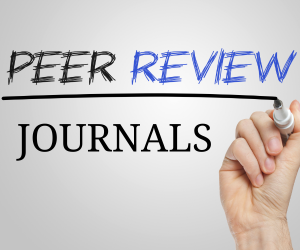IXORA CHINENSIS LAMK. FLOWER EXTRACT HEALTH DRINK
DOI:
https://doi.org/10.53555/nnmhs.v2i5.629Keywords:
Ultrasonication Extraction, Phenolic content, Flavonoids, Acute Toxicity, Hematological value, Wistar White RatsAbstract
Objective: Health Drinks currently are one of the most popular demands of consumption drink product in Thailand globally. We found that many anti-aging health drink products were developed under sub- standard and did not meet the Thai FDA requirements in the area of toxicities and bioactivities. This study aimed to evaluate the anti-oxidant activities of different methods of extraction and maceration of solvents, bioactivity quantities, toxicity, active ingredients of Ixora chinensis Lamk., flower extract health drink.
Methods: We studied different methods of extraction between Ultrasonication and maceration with 40% and 50% ethyl alcohol to compare the obtained number of antioxidants in Ixora chinensis Lamk., flower extract health drink. We compared yields with different period of time and also analysis of antioxidant activities with DPPH, FRAP and ABTS methods, total phenolic compound, active ingredients by HPLC and acute toxicity analysis in white wistar rats by oral administrating of Ixora chinensis Lamk., flower extract for after 24 h and 14 d.
Result: The study revealed no signals of acute toxicity in Ixora chinensis Lamk., flower extract which consisted of high contents of rutin, caffeoylquinic acid, chlorogenic acid, quercetin, iso-quercetin and cathechin using HPLC. Mean of gallic acid and catechin contents (µg /mg extract) were 13.62 and 6.08. The result of the highest total flavonoids (µg quercetin/mg sample extract) with macerating in 50% ethanol at 4th day was 0.6.
Conclusion: We suggested that the result of active ingredients from the flower extract showed no statistically significant difference between macerating with water, 40% ethanol, 50% of ethanol and using ultrasonication method. Ixora chinensis Lamk. flower extract health drink was safe and contained high anti-oxidant active ingredients. Therefore, it would be suitable for developing anti-aging health drink for the future.
References
.Abdelwahab SI (2010) Chemical composition, antioxidant and antibacterial properties of the essential oils of Ixora chinensis Lamk Kochummen. J Science Food Agric. Dec; 2682-8.
.Akoh, C. C. and Min, B.D (1998) Antioxidants In Food Lipids. Publisher, New York AOAC.Official method of analysis of AOAC International (2005) AOAC official method Moiture in Malt. Publisher, USA: Maryland
.Apisariyakul, A., N. Vanittanakorn and D. Buddhasukh (1995) Antifungal activity of turmeric oil extracted from Curcuma longa (Zingiberaceae). J. of Ethnopharmacology:163-9.
.Chan EW (2011) Standardised herbal extract of chlorogenic acid from leaves of Etlingera elatior (Zingiberaceae).. Pharmacognosy Res. Jul:3.178-84.
.Eric Chan Wei Chiang (2011) Analysis and Evaluation of Antioxidant Properties of Thai Herbal Teas. International Journal for the advancement of science and arts:8-15.
.E.W.C. Chan, Y.Y. Lim and Mohammed Omar (2007) Antioxidant and antibacterial activity of leaves of Etlingera species (Zingiberaceae) in Peninsular Malaysia. Food Chemistry:1586-93
.7.Faridahanim Mohd Jaafar (2007) Analysis of Essential oil of Leaves, Stems, Flowers and Rhizomes of Etlingera Elatior (JACK) R. M. Smith. The Malaysian Journal of Analytical Sciences :269-73.
.Farnworth, N.R. and N. Bunyapraphatsara (1992) Thai Medicinal Plants Recommeded for Primary Health Care System. Prachachon Co., Ltd, Bangkok : Thailand
.Habsah Mohamad, Nordin Lajis et al (2005) Antioxidative Constituents of Etlingera elatior. J. Nat. Product :285–88.
. Pawinee Deetae, Sittiwat Lertsiri et.al (2012) Antioxidant and anti-glycation properties of Thai herbal teas in comparison with conventional teas. Food Chemistry. Aug):953–59.
. H. Sumathy, J. Sangeetha, K. Vijayalakshmi Chromatographic Fingerprint Analysis of Ixora coccinea Methanolic Flower Extract ,International Journal of Pharmaceutical Sciences and Drug Research 2011: 327-30
. Angeline Toreya, Sreenivasan Sasidharan*b, Lachimanan Yoga Lathac, Sivaramakrishnan Sudhakarana & Surash Ramanathand, Antioxidant activity and total phenolic content of methanol extracts of Ixora coccinea, Pharmaceutical Biology Volume 48, Issue 10, 2010 , pages 1119-23.
. Magdy M. D. Mohammed1,2*and et. al Rubiothiazepine a Novel Unusual Cytotoxic Alkaloid from Ixora undulata , Natural Products Chemistry & 2:128
. LU Luan-mei, LIN Jin-shui, XIE Zhi-ming, Effects of Different Preservative Solution on Cut Flowers of Ixora chinensis, Acta Horticulturae Sinica, Year 2010: 1351-56 .
. T. K. Lim , Flowers, Edible Medicinal and Non Medicinal Plants 1-71.
. Sivarajan VV, Balachandran I (1941) , Ayurvedic Drugs and Their Plant Sources; Oxford and IBH Publishing Co., New Delhi, India.
. Surana A. R., Aher A. N.2 and Pal S. , Vitro and in vivo antioxidant activity of Ixora coccinea , Journal of Medicinal Plants Research :3071-75.
. Moni Rani Saha, Md. Ashraful Alam, Raushanara Akter and Rumana Jahangir . In vitro free radical scavenging activity of Ixora coccinea L . Bangladesh J Pharmacol 2008: 90-96 .
. Torey A, Sasidharan S, Latha LY, Sudhakaran S, Ramanathan S. ,Antioxidant activity and total phenolic content of methanol extracts of Ixora coccinea., Pharm Biology 2010 Oct: 1119-23.
. Bunleu Sungthong , Chirapha Butiman, Kusuma Jitsaeng. Optimizied Ultrasonication – Asissted Extraction ,Antioxidant from Mulberry (Morus alba L.) Leaves using Multiple
. Linear Regression Analysis. International Journal of Pharmacy and Pharmaceutical Sciences, 2014: 914-17.
. . Seifried HE, Anderson DE, Fisher EI, Milner JA. A review of the interaction among dietary antioxidants and reactive oxygen species. Journal of Nutritional Biochemistry 2007; 567–57
Downloads
Published
Issue
Section
License

This work is licensed under a Creative Commons Attribution 4.0 International License.
Licensing
Ninety Nine Publication publishes articles under the Creative Commons Attribution 4.0 International License (CC BY 4.0). This licensing allows for any use of the work, provided the original author(s) and source are credited, thereby facilitating the free exchange and use of research for the advancement of knowledge.
Detailed Licensing Terms
Attribution (BY): Users must give appropriate credit, provide a link to the license, and indicate if changes were made. Users may do so in any reasonable manner, but not in any way that suggests the licensor endorses them or their use.
No Additional Restrictions: Users may not apply legal terms or technological measures that legally restrict others from doing anything the license permits.





